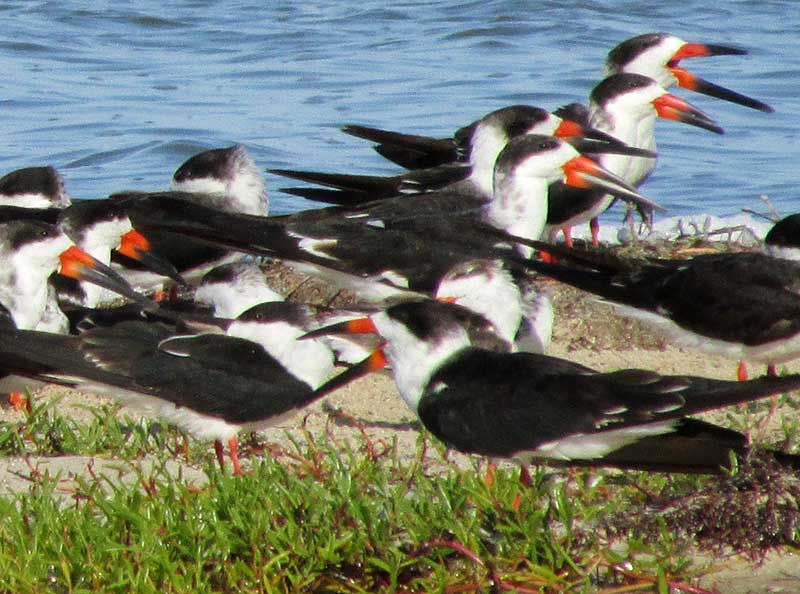Excerpts from Jim Conrad's
Naturalist Newsletter

from the November 30, 2014 Newsletter issued from Río Lagartos, on the Yucatan Peninsula's northern coast (~N21.60°, ~W88.16°), Yucatán state, MÉXICO
BLACK SKIMMERS
On a long, narrow sandbank rising just out of the water a few miles up the estuary toward Las Coloradas, on most days there's a noisy crush of lounging waterbirds, especially gulls, terns, sandpipers, pelicans and, more than anything, Black Skimmers. A small part of the skimmers is shown above.
Black Skimmers, RYNCHOPS NIGER, are black-backed birds seen offshore southward from New York and California, flying very low over the water with the lower mandible of their beaks slicing through the water, scooping up small fish, insects, crustaceans and mollusks. I read that they are more likely to skim at dawn, dusk and even at night, and seeing how much daylight time they spend loafing on that sandbank, I suspect that that's right.
In our picture notice that the lower mandible of the Black Skimmer's beak is substantially longer and stouter than the upper one. In fact, according to the Audubon Society, among all birds, only the three skimmer species constituting the Skimmer Family possess beaks with the lower mandible longer than the upper one. Their amazing beak is enough for the three species to be grouped into their own family, but not enough to get them their own bird order. They belong to the Shorebird/ Gull Order, the Charadriformes,along with gulls, sandpipers, plovers and the like.
Black Skimmers occur all along Mexico's Pacific and Atlantic coasts to South America, where they can be seen on big rivers and lakes of most of the continent.